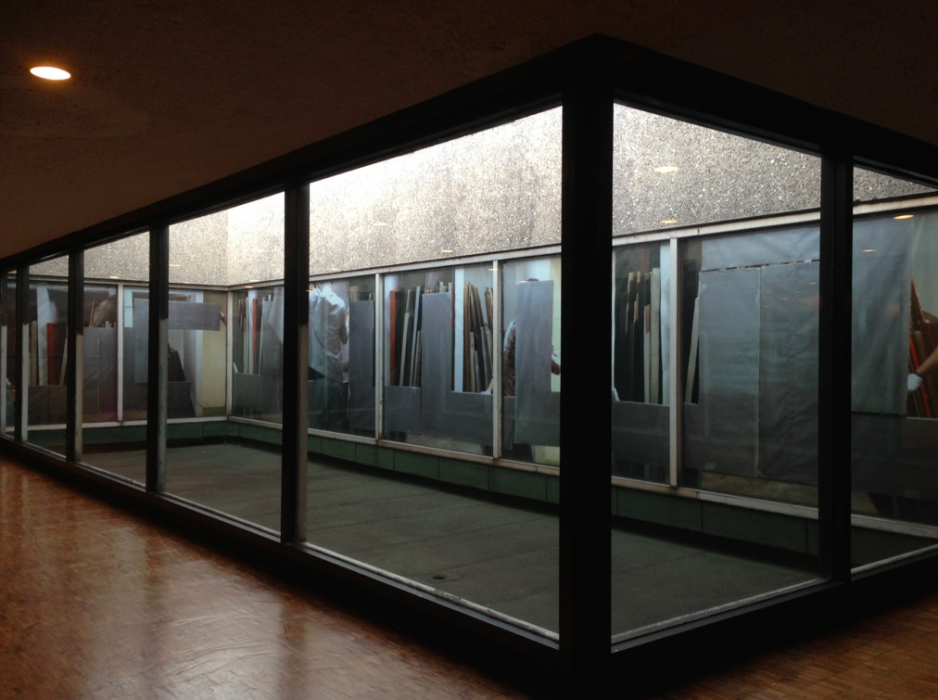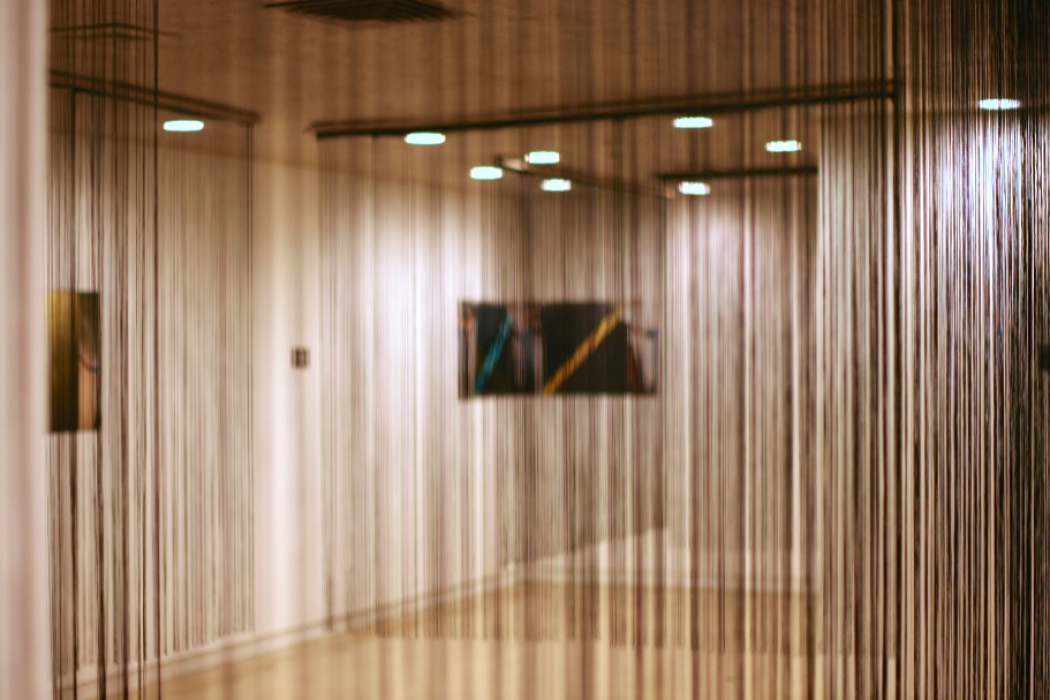ARTIST UNKNOWN
2014, Installation Inside: Photographs of archived paintings, Curtains, Canvas; Installation Atrium: 7 Tarpaulins
In ARTIST UNKNOWN, Lizza May David works with a marginal aspect of the Cultural Center of the Philippines - CCP - Visual Arts Collection: the unclassified works. Established during modernization efforts of the postwar era, with an emphasis on the seventies and eighties, the CCP Visual Arts Collection consists of more than 1000 artworks. David focuses on the 43 works in the collection that are listed as ‘Unknown‘ in the categories of ‘Artist’, ‘Title’ and ‘Year of production’.
Exploring the syntax and grammar of an “exhibition”, the artist experiments with “installation”, and “display”, investigating the potency of an institutional space, and thereby its architectural framework.
The installation deals with in/exclusion, visible/invisibility of cultural knowledge. It plays with the visitor’s expectation of what can or cannot be included in a museum collection. Detached from expectations of the “artist name” and its novelty, David developed an alternative reading approach to exacerbate the visual language of tradition. Art history has generally been taught on the basis of the history of works of art, their formal characteristics and materials, and the circumstances that contributed to their coming into existence. [1] Works of art are exhibited according to a determined spatial grammar. The architecture used in the interiors of most exhibition spaces tends to privilege a certain type of art, mostly paintings or sculptures and architecture is constructed to suit the exhibition of painting and sculpture.
In ARTIST UNKNOWN, curtains are installed at the track lights that are conventionally used to hang spotlights for exhibited art works, blank canvases invite engagement as to what images need belong. The documentation process as photography is being displayed itself. A selection of documented paintings show methods of parallel tracks to modernist forms. What can we discover in reading the visual language of Philippine Modernity? What kind of potency does institutional critique play in the construction of art and artistry in the complex formation of identities?[2]
[1] Bartomeu Mari, “The Tasks of Curating”, Manifesta Journal No 7, 2009.
[2] Flaudette May Datuin, “Imaging/Restaging Modernity: Philippine Modernism in An/Other Light”, Perspectives on the Vargas Museum Collection: An Art Historical and Museological Approach, 1998.






